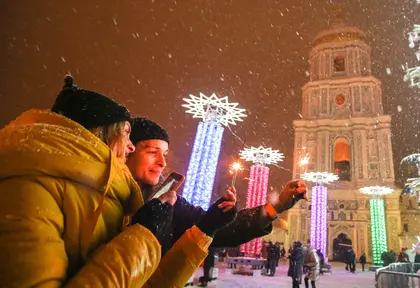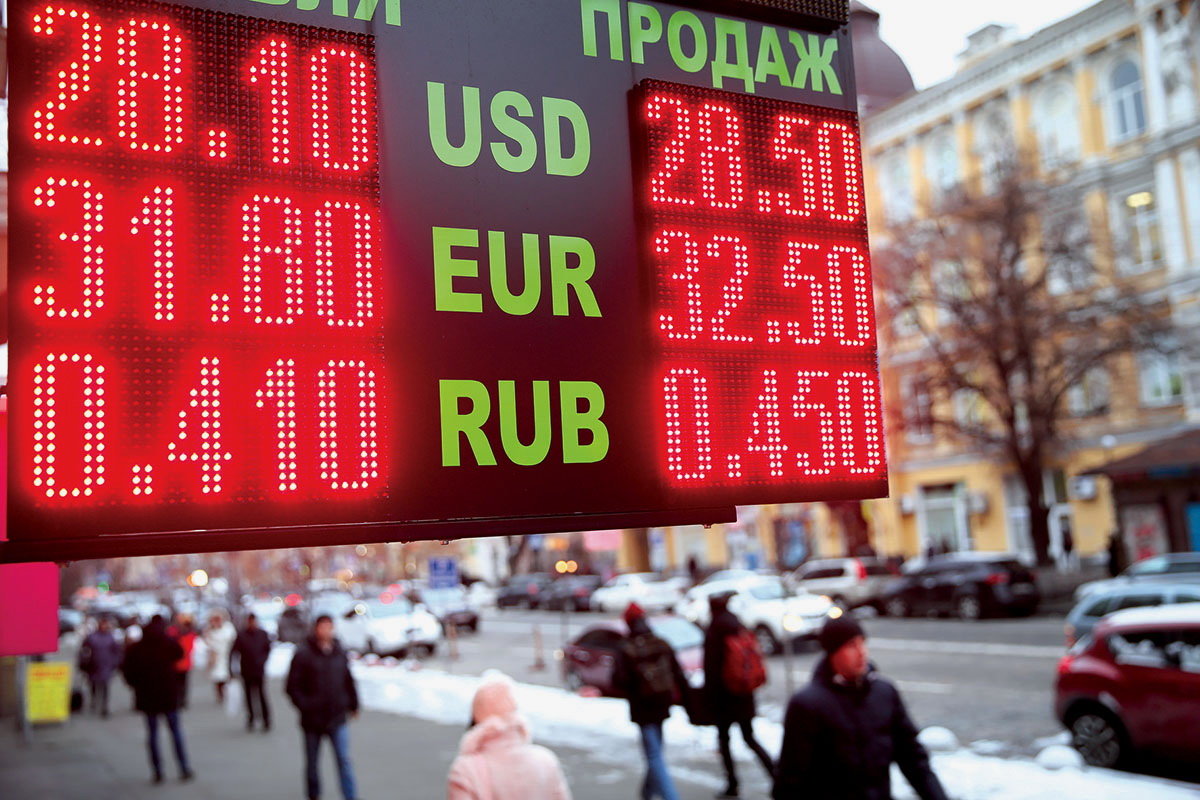Editor’s Note: Compared to recent years, Ukraine’s calendar in 2019 is empty of big international events, with no major sports competition finals or music competitions for the country to host, or landmark international agreements to come into effect.
Nevertheless, the year promises to be packed with political news, with likely two rounds of presidential elections (March 31 and April 21) and parliamentary election in October. There are also personalities to keep an eye on in sports, where Ukraine consistently punches above its weight, and other notable events and historic anniversaries.
JOIN US ON TELEGRAM
Follow our coverage of the war on the @Kyivpost_official.
Politics
The nation’s political course will be set for the next five years, barring another revolution.
The political highlights will be the March 31 presidential election, to be followed by a second round on April 21 if no one gets a majority in the first-round voting, followed by parliament elections in October.
President Petro Poroshenko has a shot at re-election, according to polls that have him trailing ex-Prime Minister Yulia Tymoshenko of the Batkivshchyna Party and the wildcard candidate, director and comedian Volodymyr Zelensky.
Other top-tier candidates include Yuriy Boyko of the newly formed pro-Russian Opposition Platform — Za Zhitya (For Life) party, and Anatoliy Grytsenko of the Civic Position party.
None of the seven other likely candidates polls more than 10 percent.
Poroshenko has been running an unofficial campaign under the slogan “Army, language, faith,” and the president hopes his success in helping obtain independence for the Ukrainian Orthodox Church from Moscow will boost his fortunes. He also clearly aims to play the patriotism card, emphasizing his record on defense and supporting Ukrainian culture and language.
But even should the president make it through to a second round of polling on April 21, his most probable second-round opponents, Tymoshenko or Zelensky, would beat him in the runoff, according to current polls.
There’s still time for the situation to change dramatically, and the race is currently wide open.
Ukrainians will go to the polls again six months after the presidential elections for the October parliamentary elections.
The current leader is Tymoshenko’s Batkivshyna, with around 19 percent, followed by the catchall party Servant of the People (associated with presidential candidate Volodymyr Zelensky, with around 13 percent) and the pro-Russian Opposition Platform — For Life party (with around 12 percent).
Poroshenko’s Solidarity party and the Civic Position party, led by presidential candidate Grytsenko, are both at around 11 percent, while the Radical Party of Oleh Lyashko, at around 8 percent, should also win seats in the next parliament.
The Samopomich Party and pro-Russian Nashi, both at around 5 percent support, are dangerously close to failing to meet the threshold for representation in parliament, while the pro-Russian Opposition Bloc at about 2.5 percent looks likely to exit the Rada.
The results of the parliamentary elections will be critical for Ukraine’s newly elected president, as political power is finely balanced in Ukraine between the parliament and presidency. Any president left without a workable majority in parliament after October 2019 could find themselves hamstrung for the bulk of their term in office.
History
2019 is the 1,000th anniversary of the start of the reign of Yaroslav the Wise, the Grand Prince of Kyiv and ruler of the ancient state of Kyivan Rus, a precursor of modern Ukraine.
Under Yaroslav, Kyivan Rus reached the zenith of its power and influence, with Yaroslav forging international alliances through his marriage to the daughter of King Olaf of Sweden, and the marriage of his daughter, Anna, to Henri I of France.
Yaroslav’s reign lasted until 1054. His legacy includes the founding of towns in what are now four different countries: Yaroslavl in Russia, Tartu in Estonia, Jaroslaw in Poland, and Bila Tserkva in Ukraine.
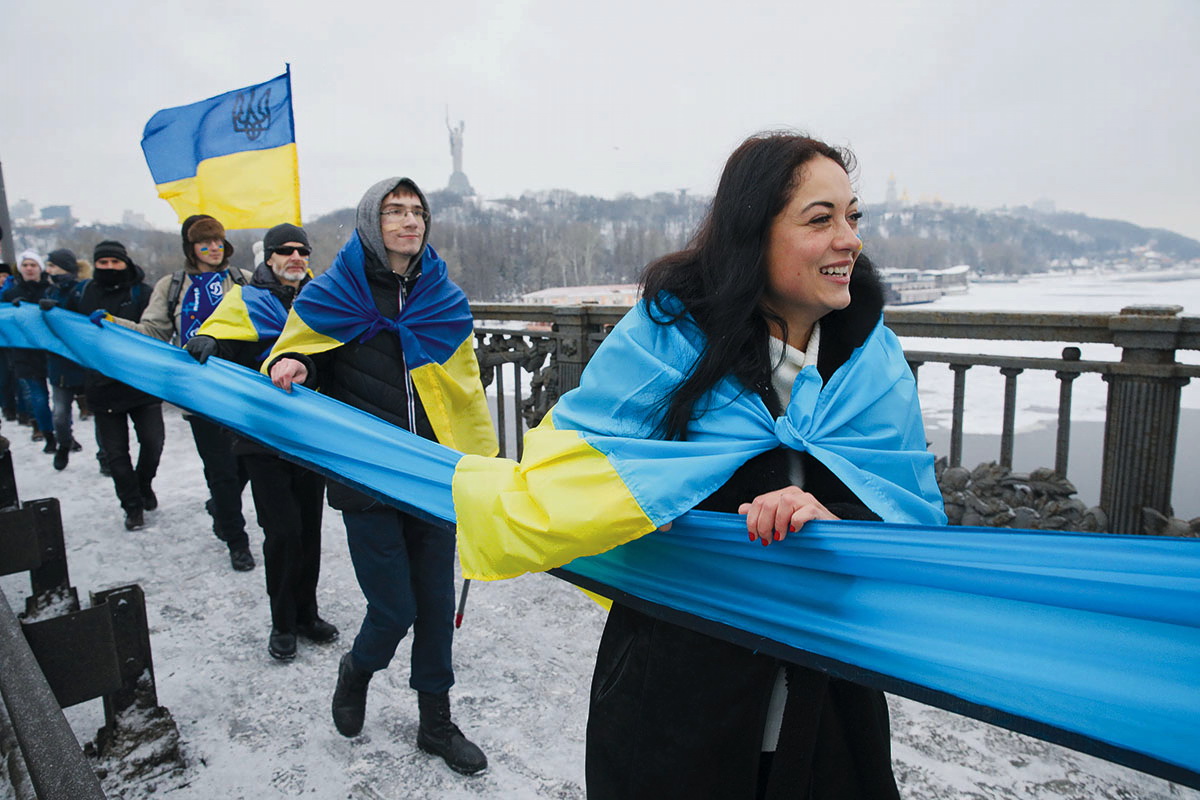
This year it will be 100 years since the first attempt to form a modern Ukrainian state, with the signing of the Act of Union in Kyiv between the Western Ukrainian People’s Republic and the Ukrainian People’s Republic — both of which had emerged from the ashes of the First World War and the collapse of the Russian empire.
The union was only ever symbolic, however — both states retained their own governments, and both immediately came under military pressure from enemies in the east and west: by October 2019 the Western Ukrainian People’s Republic had lost most of its territory to Poland, while earlier on, the Ukrainian People’s Republic saw invasion from the Bolsheviks, with Kyiv falling to the Red Army on Feb. 8, 1919. The army of the Ukrainian People’s Republic throughout spring and summer of that year managed to regain most of the territory lost to the Bolsheviks, but by the end of 1919 had lost it all again.
The Bolsheviks went on form the Ukrainian Soviet Socialist Republic in the bulk of Ukraine in 1921. Most of the Western Ukrainian People’s Republic remained under Polish control until 1939, when the area was seized by the Soviet Union under the Soviet-Nazi pact to carve up Poland and Eastern Europe between themselves.
Defense
In 2019, Ukraine marks a series of milestone anniversaries — five years since Russia invaded and occupied Ukraine’s Crimea after the Euromaidan Revolution that ousted President Viktor Yanukovych on Feb. 22, 2014, and the subsequent launch of its covert military intervention in the Donbas, in the guise of a “separatist revolt” and “civil war.”
Early Ukrainian victories at Slovyansk, and the liberation of roughly half of the invaded region, as well as the disastrous Ukrainian defeat at Ilovaisk in late August 2014 will also be marked.
Meanwhile, the war looks set to continue and not only in the Donbas, but also in Azov and Black seas — a new theater of Russia’s war on Ukraine.
Ukraine, with its new record-high defense budget of Hr 212 billion ($7.5 billion), is expected to reinforce its long-neglected navy. The navy expects to get at least one scout warship, two new Gurza-M gunboats, and an amphibious assault craft.
According to the military, the navy will again attempt to cross the Russian-occupied Kerch Strait and enter the Azov Sea, even after the unprecedented Nov. 25 attack by Russian coast guard against its navy vessels. If so, there is bound to be a Kremlin response, which may be violent.
Ukraine will also continue building up its new naval base in the Azov Sea port of Berdiansk, with this having been declared one of the military’s top priorities for 2019.
Furthermore, two Island-class patrol boats provided by the United States are expected to finally reach Ukrainian shores by July, according to the Ukrainian navy’s commander, Admiral Ihor Voronchenko.
This is still far from enough, and as Ukraine’s ambassador to the United States, Valeriy Chaliy, has said that Ukraine will be looking for even more military aid from Washington — including more lethal defensive weapons.
Joint training and military maneuvers between Ukraine and NATO forces are also scheduled. Apart from now traditional exercises such as the Sea Breeze maneuvers or in Strong Europe Tank Challenge competition, Ukraine will also for the first time welcome the British Royal Marines to the country for large-scale drills.
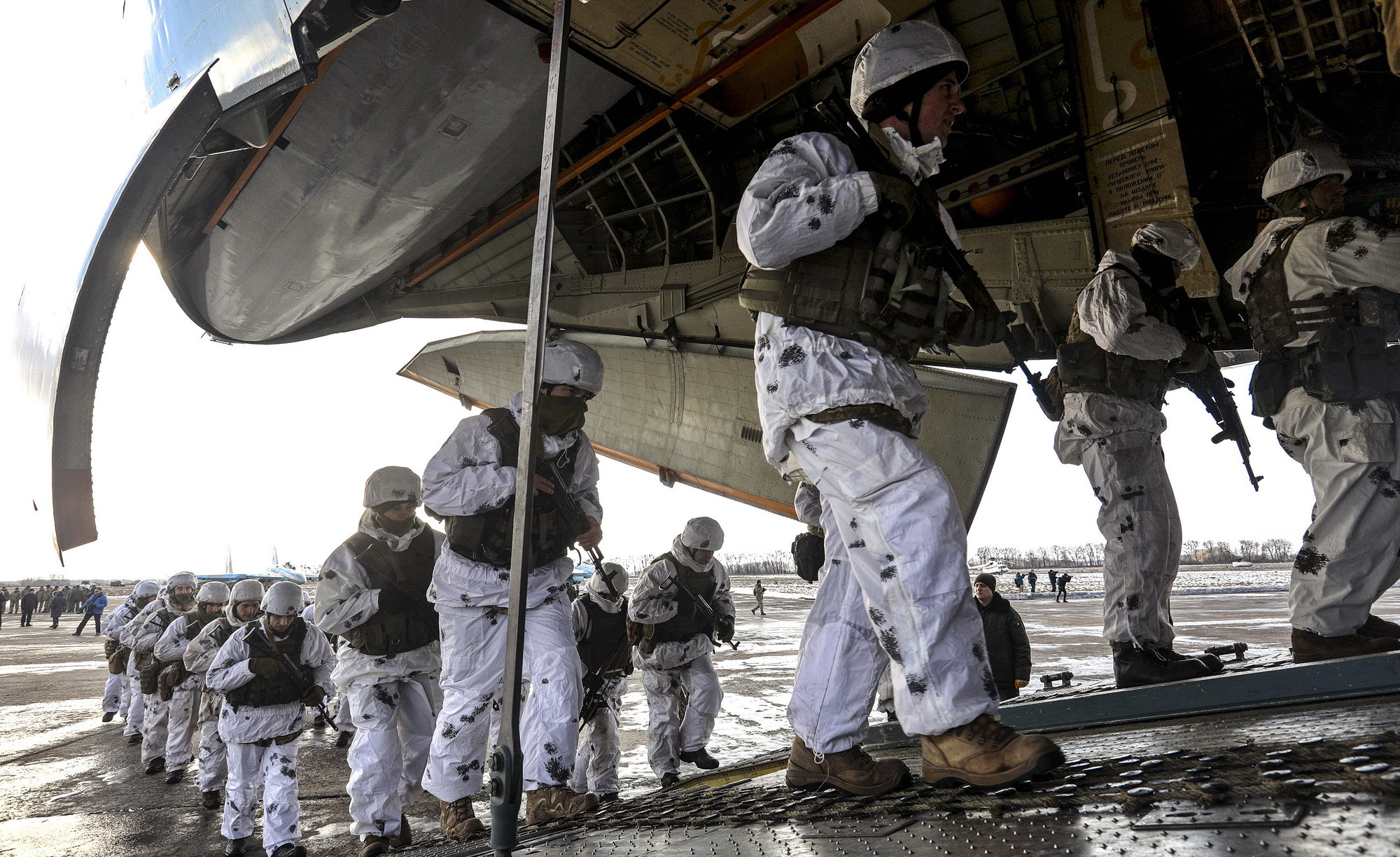
Economy
With the country slowly recovering from the 2014–15 slump, key changes are ahead.
A new law taking effect on Feb. 7 liberalizes the currency market. The law lifts a number of restrictions, most notably the ban on investing abroad (securities, properties, etc.). Loans received from non-residents won’t be required to be registered with the National Bank of Ukraine. And currency controls on economic transactions below Hr 150,000 ($5,500) will be scrapped.
The National Bank of Ukraine on Jan. 8 adopted a new currency regulation system consisting of eight main regulations, replacing 56 outdated ones, with everything that is not explicitly forbidden by the regulations now allowed.
The 18-year-old moratorium on sales of agricultural land was extended on Dec. 20, 2018 until Jan. 1, 2020. Even though it won’t be lifted prior to 2020, there might be some movement. The moratorium extension orders the Cabinet of Ministers to submit to parliament a proposal for a new law on farmland sales no later than March 1.
On May 22, the European Court of Human Rights ruled that the moratorium on land transactions violates human rights. The free trade agreement with the European Union, signed in 2014, demands the cancellation of the moratorium as well.
Ukraine, which has signed free trade agreements with the European Union, the European Free Trade Association, Canada, Montenegro, Macedonia, and most post-Soviet countries, is on pace to add two more countries to the list in 2019.
Free trade agreements with Turkey and Israel, long in the works, are slated for signing in the first half of 2019.
The agreements could give a major boost to the economy. The free trade agreement between Canada and Ukraine, which came into force in August 2017, sparked a 42 percent growth in goods traded between the two countries in 2018, to $350 million.
In 2019, Ukraine has to replay $1.8 billion of foreign debt, with the country’s total debt now at 68.8 percent of gross domestic product, according to the International Monetary Fund. The organization on Dec. 18 approved a new 14-month agreement under which Ukraine will receive $3.9 billion in low-interest loans if it meets conditions, including a budget deficit of 2.5 percent of GDP, formation of an anti-corruption court, and market prices on household gas. Of this amount, $1.4 billion was released immediately, while the rest will be granted to Ukraine after semi-annual reviews on May 15 and Nov. 15, according to the fund.
Meanwhile, the IMF pegs Ukraine’s GDP growth forecast at 2.7 percent with inflation at 7.3 percent in 2019, according to the fund. The IMF also expects 9.2 percent unemployment.
Reforms
The main reform expected this year is the creation of the High Anti-Corruption Court, which according to the law must be set up by June.
However, anti-corruption experts say the High Qualification Commission of Judges, which is selecting judges of the court, has all tools at its disposal — including an arbitrary methodology — to rig the selection process and promote loyal candidates, although the commission denies it has such intentions.
Meanwhile, there are mounting accusations that the Nov. 12 legal knowledge tests for the anti-corruption court and the Supreme Court were falsified, which is also denied by the commission.
Some of the test questions had more than one correct answer, according to ex-Public Integrity Council coordinator Vitaly Tytych, High Qualification Commission member Andriy Kozlov and Judge Mykhailo Slobodin.
The commission had the opportunity to promote some candidates by telling them which answers it deems correct, according to Tytych, who participated in the competition for the Supreme Court but did not pass the tests. The commission refused to give him his test results, which he says proves they were falsified.
Anti-corruption watchdogs on Jan. 9 identified 55 out of 113 candidates for the High Anti-Corruption Court as not meeting professional ethics and integrity standards.
The Public Council of International Experts, a foreign advisory body, is expected to assess all of the candidates for the anti-corruption court in January and decide to veto or approve them.
One of the risks is that the public council will veto only a few candidates and allow the High Qualification Commission to appoint a politically dependent and dysfunctional court, according to Tytych. To resolve this problem, the public council should veto all candidates except for those with the best experience, skills and integrity, he argues.
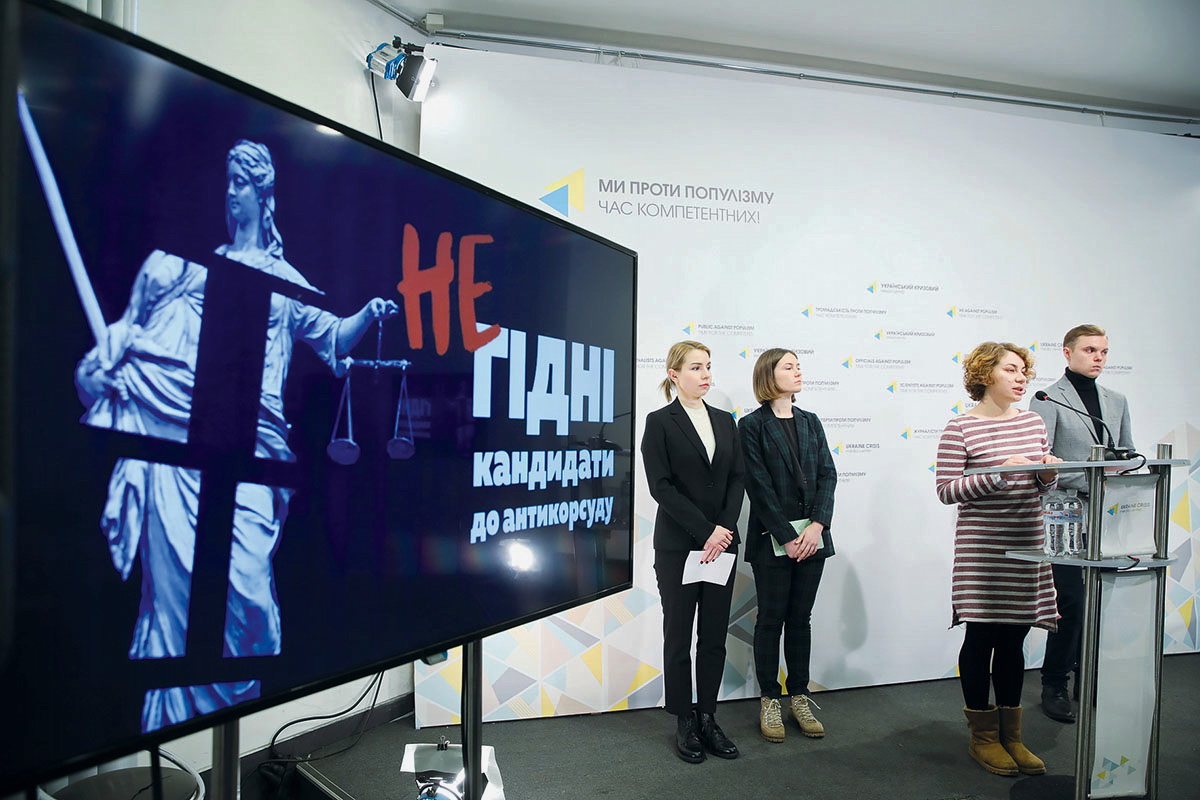
Legal affairs
Ukraine’s parliament, the Verkhovna Rada, is expected to pass a seminal law this year on the status of the Ukrainian language.
However, the current draft is seen as uncompromising and intrusive in promoting the Ukrainian language, and lobbying is fierce to get lawmakers to do more to protect the language rights of national minorities — an issue that has caused tensions between Ukraine and its neighbors in recent years.
Important international court proceedings will also take place.
Ukrainians will be keeping a close eye on rulings of the European Court of Human Rights in cases related to Russia’s war.
In addition, the results of some upcoming international cases involving Ukrainian businesses will have political and macroeconomic consequences — these include the case of Oshchadbank vs. the Russian Federation, with the Ukrainian state bank having successfully sued Russia for the loss of its assets in Russian-occupied Crimea, and now seeking the enforcement of the arbitration tribunal’s compensation award.
Ukraine is also suing the former owners of PrivatBank for allegedly syphoning off assets from the bank ahead of its privatization in late December 2016. The bank racked up $5.6 billion in losses covered by taxpayers.
Sports
With major team events bypassing Ukraine in 2019, the year could still see triumphs for individual Ukrainian athletes in tennis, boxing and swimming.
Elina Svitolina, Ukraine’s top tennis player, said in a recent interview she aims become the world’s No. 1 woman tennis player by the end of the year. The 24-year old Ukrainian is in the top 10 for a third straight year, peaking as the third-ranked tennis player in the world in September 2017. Svitolina finished last year in 4th place, well in reach of her goal.
Ukrainian women’s tennis could have a breakthrough year, as the country currently has five tennis players in the top‑100, with four of the five younger than 25. The 21-year old Anhelina Kalinina and 16-year old Marta Kostyuk are just outside of the top‑100. And Lesia Tsurenko, 29, reached the final of the Brisbane International in early January and is now in the top 25.
While 2018 was a great year for Ukrainian boxers, 2019 will bring new challenges, as current boxing champions Oleksandr Usyk, Vasyl Lomachenko, Oleksandr Gvozdyk and Artem Dalakian will have to defend their titles.
Usyk, who became the undisputed cruiserweight champion and was voted by ESPN and Sports Illustrated as the 2018 Fighter of the Year, plans to rise to the heavyweight division — the most prestigious.
In swimming, the FINA World Aquatics Championship, the main aquatics tournament outside the Olympic Games, will take place on July 12–28, in Gwangju, South Korea.
Andriy Govorov, 26, and Mykhailo Romanchuk, 22, are those to keep an eye on. Both are favorites to win their events, with Govorov holding the world record for the 50-meters butterfly, and Romanchuk holding eight national records, competing in the 400-, 800- and 1,500-meters freestyle swimming.
With no major football tournaments taking place this year, Ukraine’s national football team will attempt to qualify for the upcoming UEFA Euro 2020 tournament. Ukraine is grouped with four other teams — Portugal, Serbia, Lithuania and Luxemburg. Title-holders Portugal and Serbia are the main threats. The first game will be played on March 22 in Lisbon, against Portugal.
Shakhtar and Dynamo Kyiv, the two main football teams in Ukraine, will compete against European teams in the Europa League, Europe’s second-tier football tournament. With 2019 marking exactly 10 years since Shakhtar’s historic victory in the UEFA Cup, the Europa League’s predecessor, the team will attempt to replay that success.
Dynamo will play Greece’s Olympiacos, while Shaktar will face Germany’s Eintracht Frankfurt. The teams will play two legs home and away, on Feb. 14 and Feb. 21.
Compiled by: Euan MacDonald (history, politics), Oleksiy Sorokin (sports, economics), Vyacheslav Hnatyuk (legal affairs), Oleg Sukhov (reforms), and Ilia Ponomarenko (defense).
You can also highlight the text and press Ctrl + Enter


